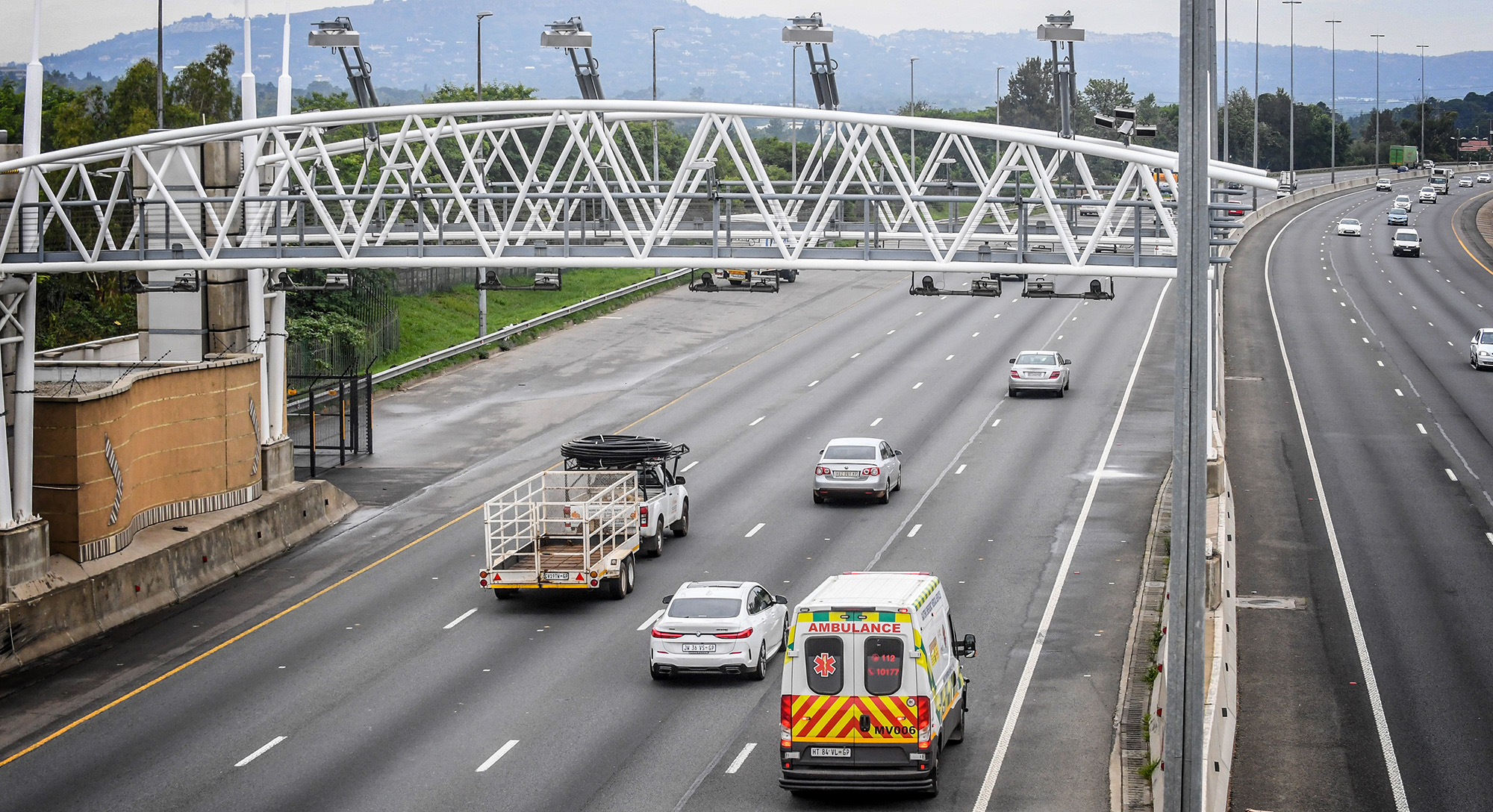Although the Gauteng government scrapped its unpopular electronic tolling system six months ago, the debt owed by motorists for their non-compliance with the system lives on.
The debt of billions of rands might never be recovered by the Gauteng government or the SA National Roads Agency (Sanral), which has run and bankrolled the electronic tolling system since its introduction in December 2013.
The electronic tolling system — formally known as the Gauteng Freeway Improvement Project — charged Gauteng motorists (barring minibus taxis and buses) for the use of new highways in the province. It was a departure from the practice of motorists being charged nationally through taxes. However, the system faced pushback from the business community, motorists and trade unions — which inspired the launch in 2012 of the Opposition to Urban Tolling Alliance (Outa), a civil society organisation.
Sanral says the total debt and expected losses associated with the defunct tolling system was R28.7-billion by 31 March, up from R21.9-billion in the previous year.
Sanral’s 2023/24 annual report indicates that most of the debt has accumulated and remained unpaid by motorists for over a year. Some have refused to pay their toll fees for 11 years. If motorists do not pay their tolling fees for three months or more, Sanral’s policy regards the money as being uncollectable, impairing it in its financial books. In other words, the chances of recovering the nearly R30-billion are slim.
Sanral gave up on recovering this debt on 27 March 2019 when its board greenlighted a policy of no longer issuing motorists with summonses to force them to pay. Outa has long argued that the only way motorists can be forced to pay is if the summons system is reinstated — a legal route for which Sanral has no appetite.
Sanral admits in its latest annual report that there “has been no significant change on the overall collection rate of the debt” and recovery levels remain low. On a total debt of R28.7-billion, Sanral has collected less than R300,000 — not even 1%.
“There is no material collection expected from non-key account holders [non-paying customers] after the reporting date due to the announcement [of the tolling system in Gauteng being scrapped]. All debt, at the reporting date [31 March] has proven difficult to recover, therefore it is impaired in full,” reads Sanral’s annual report.
Sanral and the Gauteng provincial government still insist that motorists are obligated to pay their outstanding debt, even though the tolling system was scrapped on 11 April, days before the general election.
Uncertain future of Gauteng roads
The end of the tolling system will pave the way for the Gauteng government to take over, from Sanral, the maintenance and inspection of 201km of tolled freeways, bridges and slopes in the province.
Read more: End of e-tolls creates a funding headache for Gauteng roads
This function costs at least R3-billion a year (including the recurring backlog of maintenance), which the provincial government will probably have to fund from its constrained budget. Gauteng, led by Premier Panyaza Lesufi, has still not offered credible details on how the province will come up with the money.
Sanral has been burned by the Gauteng Freeway Improvement Project (GFIP). The road agency pumped in R22.4-billion to fund the GFIP’s build and plug gaps created by the tolling system debt. In July 2022, this was followed by another injection of R3.74-billion into the GFIP — which came from government grants earmarked for funding untolled roads.
Only 11% of Sanral’s road network of more than 20,000km is tolled. Sanral’s untolled roads are funded through grants from the national fiscus (or public finances) and money the state-owned enterprise (SOE) raised in debt capital markets.
The future of Sanral
The end of the GFIP will see Sanral return to its original mandate: planning, financing, developing and maintaining the national road network. It will return to debt capital markets to fund infrastructure projects. Sanral has already sought approval from the government to increase its borrowing limits to R16.5-billion to fund the expansion of the road network by up to 35,000km.
The parastatal is also restructuring its preferential procurement policy for tenders on road projects after it was forced to withdraw the policy by the construction industry. Sanral’s policy faced court action from the construction industry because it heightened requirements for firms to have a favourable broad-based black economic empowerment profile to win tenders.
Read more: Sanral board withdraws controversial preferential procurement policy, cancels advertised tenders
According to the annual report, the withdrawal of the policy resulted in 315 tenders being cancelled during its 2023/24 financial year, during which the value of tenders awarded dropped from R51.3-billion to R17.8-billion. A total of 278 tenders were re-advertised using a new procurement policy. Of these, 170 tenders were eventually awarded in recent months. DM





